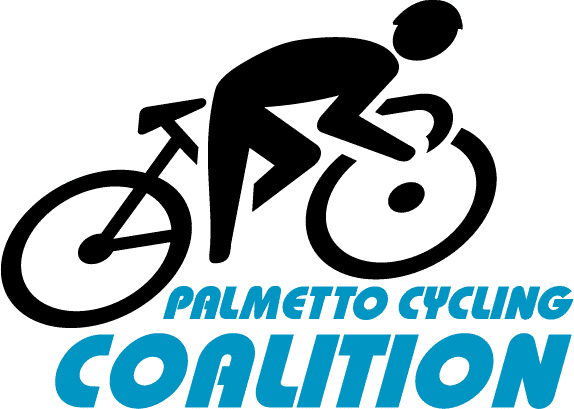Rumble Strip policy and SCDOT
The Coalition worked collaboratively with SCDOT over the last few years to improve the Rumble Strip policy. The first policy was adopted in 2011, and we’ve since convinced SCDOT to make changes to Rumble Strip design. Ultimately, our goal is to affect changes to where and which roads the SCDOT plans to place Rumble Strips.

First, let’s define a Rumble Strip and why we’re doing this. Many forms exist, but usually they are a series of parallel stripes dug into the side of the road, just to the right of the white edge line. A rumble strip’s main purpose is to alert an unaware motorist that he’s running off the road. Incidentally, this is the most common crash type in SC’s rural roadways where speeds are high. And rumble strips are the most cost effective way for SCDOT to deal with them. However, while rumble strips make traveling at high speeds safer for a motorist, they can make bicycling much more dangerous.
We helped SCDOT make changes, and they were significant but they only affected the design. The big improvement is now an experienced bicyclist can navigate around them. We succeeded in working with SCDOT to make rumble strips: 1) shallower, 2) narrower, and 3) not continuous (a skip pattern means one can maneuver around it). We also convinced SCDOT to place them within the painted edge line, so if any shoulder exists, it’s primarily protected for the bicyclists’ right of way. So they’re safer, but primarily for the very, very experienced bicyclist.
However, the existing policy still doesn’t have the full changes that the majority of people that bike our state need. Most of our roads in SC have shoulders less than 2 feet, so any Rumble Strip is a bad one. 99% of us can’t ride on roads where ANY type of Rumble Strip exists with less than a 4 foot shoulder, so the presence of a Rumble Strip typically means that road is less safe for the bicycling public and therefore not bike-able. That’s why changes need to come in where they are built, in other words beyond the design – the planning stage. The Coalition is working to impress upon SCDOT to incorporate better planning into their policy, by making special consideration for routes in any local/regional/state Bike Plan or from an established list of popular bicycling routes, by either:
1) exempting those roads from getting rumble strips, or
2) if motor vehicle crash analysis indicates rumble strips are necessary, that
a) a 4 foot shoulder is incorporated/added, or
b) an alternate and adequate bicycle route is established.
This is our current challenge, but we can’t go it alone. Local advocates can help by urging their city planners and elected officials to ensure roads identified as popular or necessary bicycling routes – don’t get rumble strips without adequate shoulders.

Rumble strip are the product of a short-sighted non-bicyclist civil engineer. Let them ride a bicycle on the roads with these horrible strips. Let them experience trying to ride along the shoulder of a narrow country road that have rumble strips to the right & cars flying past them on their left. I was hit by a car over 2 years ago in the Dutch Fork area & the driver was not sited.
Antonio, thanks for the comment. We hope you have recovered, and we also hope you submitted a positive comment suggesting a solution (you’re welcome to template ours as described in post above).
Thanks for your continuing efforts to make SC safer for everyone. It really irrates me when SCDOT takes what was a riddeable shoulder and fills it with rummble strips forcing cyclist to ride in the lane of traffic.
Rise safe, Pedal hard.